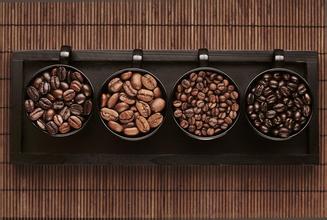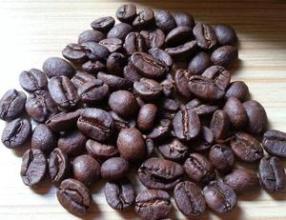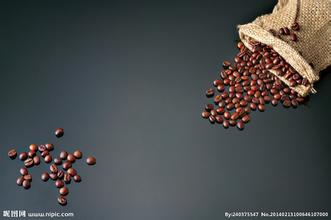The birthplace of Ethiopian coffee how to drink Ethiopian coffee powder
Various forms of coffee cultivation can be found in Ethiopia: everything from wild coffee forests and semi-developed land to traditionally operated plots to modern plantations. About 50% of the coffee is grown more than 1500 meters above sea level. Harrar coffee is the highest growing area of all coffee in Ethiopia. Hara coffee can be divided into long coffee beans and short coffee beans, of which long coffee beans are the most popular. It has a soft taste, with wild flavor of wine, and slightly sour taste, unforgettable after drinking. Djimmah Coffee is wild at an altitude of more than 1200 meters and is sold under two brands: Limu Coffee and Babeka Coffee. Other coffee names include Sidamo coffee from central China, which is sold under the brand name Yirgachaffe, and coffee from Lekempti, which has a unique flavor. Jima and Cedamo beans have an unpleasant appearance but a good taste. One of the rarest Ethiopian coffee beans on the market is Ilgachafi, which is exported to Japan and Europe but is rarely seen in the United States. This is because Dallmeyer, the German coffee roaster owned by Nestl é, has established close ties with the growers of Ilgachafi coffee, thus obtaining the largest single supply of the coffee beans.
The flavor of Ethiopian coffee is difficult to describe. It is neither strong nor sour. Therefore, it is not suitable for deep baking, otherwise it will easily lose its characteristics. The fat posture of Chau Tiebika makes Ethiopian beans look a little malnourished. But "beans" can not be seen, Ethiopian coffee has the most citrus aroma in the world, whether it is instant coffee or freshly ground coffee, you can smell the aroma of orange or lemon when you extract it. The nose is characterized by strong floral, fruity, sour and sweet aromas, but the alcohol is slightly thicker or less dense. The biggest disadvantage is that it is easy to bake unevenly, especially sun-dried beans. Even the best Grade3 Harald sun-dried beans often show uneven color, which is the biggest defect of Ethiopian beans, but the good thing is that it does not affect its good flavor. For coffee fans, you don't have to worry about what the beans look like, it's the most important thing. The stability of Ethiopian water-washed beans is much better than that of sun-dried beans, whose flavor fluctuates greatly every year, so be sure to test it several times before buying in large quantities. If you buy good sun-dried beans, their flavor is much deeper than water-washed beans, but if you buy improperly handled sun-dried beans, it will certainly make people speechless, which is the voice of many coffee fans.

Important Notice :
前街咖啡 FrontStreet Coffee has moved to new addredd:
FrontStreet Coffee Address: 315,Donghua East Road,GuangZhou
Tel:020 38364473
- Prev

Columbia mocha coffee the efficacy of Colombian coffee beans
Coffee beans in this 12-16 minutes long, the temperature is as high as 232 degrees, in the process of conversation with the hot cut, after many chemical changes, three times popcorn-like crisp sound, and the loss of 15% of the moisture of 25%. From raw beans, light and medium roasting to deep roasting, moisture is released again and again, the weight is reduced, but the volume expands for a long time, the color of coffee beans deepens, and the fragrant oil is gradually released.
- Next

How to make delicious coffee _ how to make delicious coffee
Step 1, select coffee beans for Jazz Island, which require finer grinding than American coffee, but not to the degree of powder, which is still granular. If you grind too fine, the coffee powder will penetrate the metal filter, leaving residue. And the formation of excessive extraction and too bitter, too astringent, if the grinding is too coarse, hot water passes through the coffee too quickly and the extraction is not enough. 4 step 2, mocha pot
Related
- Does Rose Summer choose Blue, Green or Red? Detailed explanation of Rose Summer Coffee plots and Classification in Panamanian Jade Manor
- What is the difference between the origin, producing area, processing plant, cooperative and manor of coffee beans?
- How fine does the espresso powder fit? how to grind the espresso?
- Sca coffee roasting degree color card coffee roasting degree 8 roasting color values what do you mean?
- The practice of lattes: how to make lattes at home
- Introduction to Indonesian Fine Coffee beans-- Java Coffee producing area of Indonesian Arabica Coffee
- How much will the flavor of light and medium roasted rose summer be expressed? What baking level is rose summer suitable for?
- Introduction to the characteristics of washing, sun-drying or wet-planing coffee commonly used in Mantenin, Indonesia
- Price characteristics of Arabica Coffee Bean Starbucks introduction to Manning Coffee Bean Taste producing area Variety Manor
- What is the authentic Yega flavor? What are the flavor characteristics of the really excellent Yejasuffi coffee beans?

